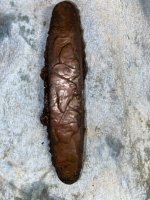starsplitter
Sr. Member
- Jan 20, 2007
- 434
- 31
Greetings:
Has anyone heard of a cache of silver bars hidden in a cave or mine around Uniontown, PA? Thanks.
Starsplitter
Has anyone heard of a cache of silver bars hidden in a cave or mine around Uniontown, PA? Thanks.
Starsplitter






